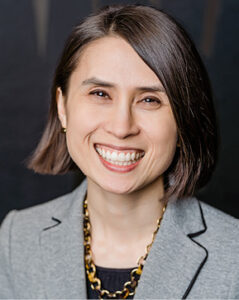Given that CDPH is not planning to issue a statewide blanket waiver of the nurse-to-patient ratio law at this time, hospitals are reminded of the following exceptions related to this law:
- The ratio regulation states that “The hospital shall plan for routine fluctuations in patient census. If a healthcare emergency causes a change in the number of patients on a unit, the hospital must demonstrate that prompt efforts were made to maintain required staffing levels. A healthcare emergency is defined for this purpose as an unpredictable or unavoidable occurrence at unscheduled or unpredictable intervals relating to healthcare delivery requiring immediate medical interventions and care.” (See Title 22, Section 70217(g).)
- The ratio penalty statute states that “A general acute care hospital shall not be subject to an administrative penalty … if the hospital demonstrates to the satisfaction of [CDPH] all of the following:
- That any fluctuation in required staffing levels was unpredictable and uncontrollable.
- Prompt efforts were made to maintain required staffing levels.
- In making those efforts, the hospital immediately used and subsequently exhausted the hospital’s on-call list of nurses and the charge nurse.” (See Health and Safety Code Section 1280.3(f)(4)(A).)
CDPH retains the authority to approve program flexibility requests related to the nurse-to-patient ratio law on an individual hospital basis. Before CDPH will approve such a request, it expects hospitals to try to obtain temporary staffing from its usual vendors, as well as from the following staffing agencies with which CDPH and the state of California have worked. The state has reported that these agencies have displayed a high standard of responsiveness, deployment speed, and clinical competency of their staff.
| Staffing Agency | Point of Contact | Email Address | Phone | Roles |
|---|---|---|---|---|
| SLS | Janna Contorno | jcontorno@sls-health.com | (713) 880-8419 | Leadership |
| ProLink | Brent Wallace | bwallace@prolinkstaff.com | (614) 558-3599 | Leadership |
| Brendan Tobolski | btobolski@prolinkstaff.com | (716) 462-3112 | Leadership | |
| SnapNurse | Cherie Kloss | cherie@snapnurse.com | (404) 424-9725 | CEO |
| Bart Richert | bart.richert@snapnurse.com | (863) 287-3355 | VP | |
| Jeff Richards | jeff.richards@snapnurse.com | (404) 849-8297 | Leadership | |
| NuWest | Mona Veiseh | mveiseh@nuwestgroup.com | (425) 602-5716 | Leadership |
| Medefis (Medefis/StaffCare/AMN) | Kriti Patel | Kirti.Patel@shiftwise.com | (971) 634-0993 | Leadership |
| Lauren LoGuercio | lauren.loguercio@shiftwise.com | (971) 634-0996 | Leadership | |
| GQR | Josh Redland | josh.redland@gqrgm.com | (424) 306-2373 | Leadership |
| Rory Moaddocks | rory.maddocks@gqrgm.com | Leadership | ||
| Loyal Source | Brian Synder | bsnyder@loyalsource.com | (407) 930-8540 | Leadership |
| Supplemental Health Care (SHC) | Melissa Evans | mevans@shccares.com | (469) 844-8908 | Leadership |
| Aya | Thomas Lee | Tlee@ayahealthcare.com | (858) 279-2787 | Leadership |
| Sophia Morris | smorris@ayahealthcare.com | (866) 546-7122 *11359 | Leadership | |
| Medical Solutions | Kyle Hoy | kyle.hoy@medicalsolutions.com | (402) 986-5130 | Leadership |
In addition, CDPH has stated that it requires hospitals that are requesting program flexibility related to the nurse-to-patient ratio law to request staffing from their MHOAC. The hospital must do this even if the MHOAC has already informed the hospital that it has no staffing to deploy. CDPH wants the request entered into the MHOACs’ Salesforce system, which is a tool used by CDPH to provide a line of sight into hospital staffing needs statewide. Some MHOACs do not realize that CDPH has adopted this requirement — your hospital may need to educate them in this regard.
Finally, CDPH may ask hospitals requesting a program flex to describe the actions they have taken to try to increase staffing. This could include paying overtime or other incentives for staff to accept additional shifts, filling unfilled positions as much as possible, discharging patients as appropriate, rescheduling non-emergent surgeries, diverting ambulance traffic, etc.
CDPH has mentioned that it may consider program flexes requesting approval to use a team nursing model in a more favorable light than program flex requests that simply want nurses to care for additional patients.
CHA will continue to advocate for state policies that allow hospitals to best deploy available staffing to care for patients.



